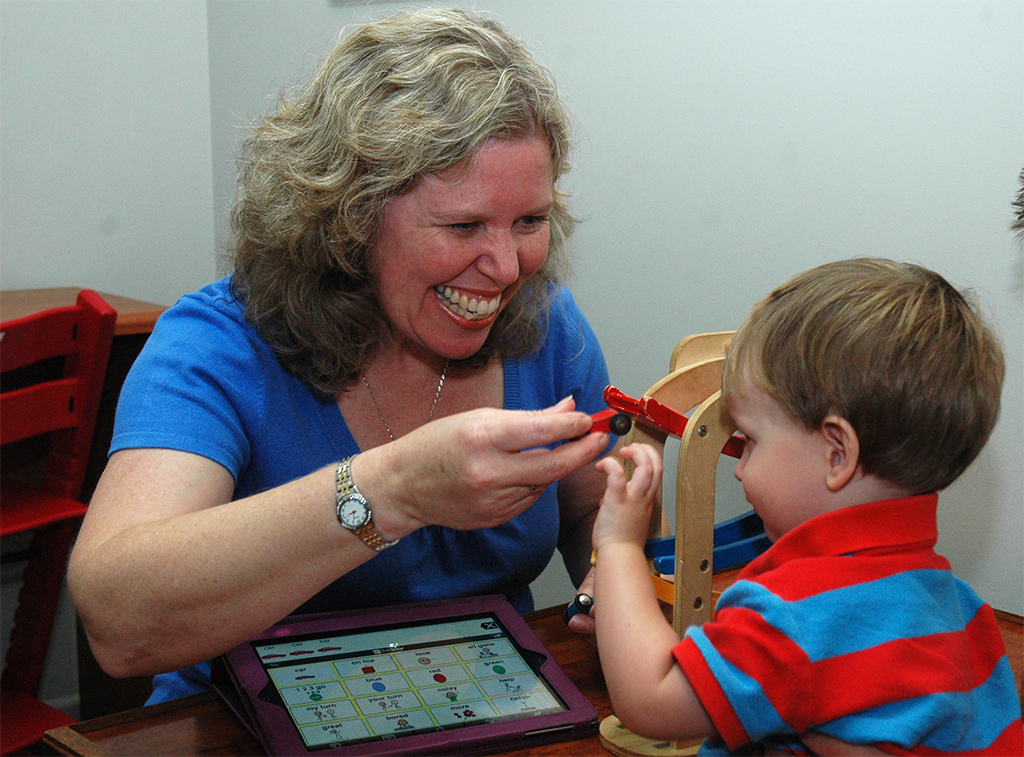In recent years there has been a popular trend to use hand signs to communicate with young babies. Various programs are available on the internet, in books or on DVDs. These programs all aim to teach parents and babies how to use hand signs such as “eat”, “drink”, “finish” and “more,” long before the baby will be able to speak these words.
This approach is taking advantage of the typical development of communication which sees children using their facial expressions and gestures before their first spoken words. Most parents see their children gesture ‘up’ or ‘no’ long before they hear those words spoken clearly. Even as adults we continue to use gestures to add meaning to our speech.
When a child presents with delayed speech and language we can tap into this developmental sequence to teach hand signs which typically develop earlier and easier than speech. Using signs with children with speech delay is helpful for them to understand others better and for their ability to express themselves.
Our understanding or comprehension is the ability to make sense of what someone else is saying to us. When we, as a parent or carer, use a sign with our spoken words it helps children understand because:
- Signs add visual information so that children are not just relying on what they hear.
- They add meaning.
- Signs last longer than speaking the word/s and give the child a longer time to process the information.
- Signs promote attention and eye contact.
- Using signs tends to slow down the communication of adults and this is helpful for children learning to speak.
- Signs highlight the important words, for example in an instruction like “Can you get your hat”, we would only sign ‘your’ and ‘hat’.
Our expression is the ability to get our message across and as adults we may use a combination of speech, gestures, facial expressions or written messages. The advantage of teaching a child with speech delay to sign includes:
- Gestures develop earlier than speech and can therefore be easier for a child to learn.
- Signs provide an achievable method of communication.
- Signs give communication success and promote speech attempts.
- Signs help others to understand words which are still being learnt. For example the child may be able to say /b/ but when they say it paired with the sign for ‘ball’ the parent will know exactly what they want!
- Signs promote language. From a very early stage of teaching we can begin to combine signs into sentences, e.g. “More food”.
- Signs reduce frustration for both the child and communication partners as messages are exchanged successfully. This decreases the pressure to speak and actually enhances learning of speech.
- Signs are portable – no resources are needed!
If you’re reading about signing programs on the internet be aware that signs are different in every country, just as we use different spoken languages. The signs we use in Australia come from the deaf community and are called Auslan.
If you think your child’s speech is delayed and you’re interested in learning more about signing with your child please contact us for an assessment. We will be happy to discuss with you the right approach for your child and family.


